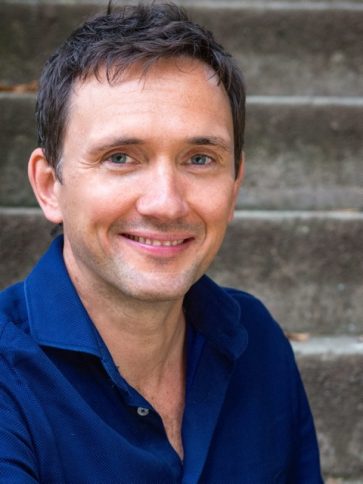Ard A. Louis is a Professor of Theoretical Physics at the University of Oxford, where he leads an interdisciplinary research group studying problems on the border between chemistry, physics and biology, and is also director of graduate studies in theoretical physics. From 2002 to 2010 he was a Royal Society University Research Fellow at the University of Cambridge and the University of Oxford. He has written for the BioLogos Foundation, where as of November 2011 he sat on the Board of Directors. In 2013 he was elected a member of the International Society for Science and Religion.
With David Malone he made the 4-part documentary Why Are We Here for Tern TV. He appears in the episode “Proof of God” in the series ‘The Story of God with Morgan Freeman’.
Prior to his post at Oxford he taught Theoretical Chemistry at the University of Cambridge where he was also director of studies in Natural Sciences at Hughes Hall.
He was born in the Netherlands, was raised in Gabon and received his first degree from the University of Utrecht and his Ph.D. in theoretical physics from Cornell University.
Recent Publications in Science and Religion:
Wonderen en Wetenschap: de Lange Schaduw van David Hume, in Cees Dekker, René van Woudenberg and Gijsbert van den Brink (ed.), Omhoog kijken in platland (Baarn: Ten Have, 2007).
Geloof en wetenschap: van culturele vervreemding naar hereniging, in Cees Dekker (ed) Geleerd en Gelovig (Baarn: Ten Have, 2008)
Christen en toch serieuze natuurwetenschapper, Nederlands Dagblad, 4 Nov 2008
Has physics disproved the existence of God? UCCF Free website
Belijdend christen kiest evolutie, Nederlands Dagblad, 22 Jan 2009
Conflict of boedelscheiding? in Martine van Veelen and Cees Dekker (ed) Hete Hangijzers ( Buijten en Schipperheijn 2009)
A Deeper Logic? in R. Bancewicz (ed) Test of FAITH: Spiritual Journeys with Scientists. (Paternoster 2009)
Recent Scientific Publications:
The self-assembly and evolution of homomeric protein complexes
Phys. Rev. Lett. 102, 118106 (2009)
Knot controlled ejection of a polymer from a virus capsid
Phys. Rev. Lett. 102, 088101 (2009)
The self-assembly of DNA Holliday junctions studied with a minimal model
J. Chem. Phys. 130, 065101 (2009)
Hydrodynamics of confined colloidal fluids in two dimensions
Phys. Rev. E 79, 051402 (2009)
Self-assembly of monodisperse clusters: Dependence on target geometry
J. Chem. Phys. 131, 175101 (2009).
Monodisperse self-assembly in a model with protein-like interactions
J. Chem. Phys. 131, 175102 (2009)
Effect of topology on dynamics of knots in polymers under tension
arXiv:0908.1085 (2009)
Modelling the Self-Assembly of Virus Capsids
arXiv:0910.1916 (2009)
Self-assembly, modularity and physical complexity
arXiv: (2009)
DNA nanotweezers studied with a coarse-grained model of DNA
arXiv:0911.0555 (2009)




